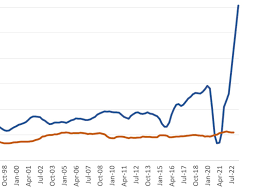Understanding the Canada Housing Crisis

Introduction: A Growing Concern
The Canada housing crisis has become one of the most pressing issues facing the nation today, impacting countless Canadians across the spectrum. With skyrocketing property prices, increasing rental costs, and a shortage of affordable housing options, many citizens find themselves in precarious situations. This crisis not only affects individuals and families seeking stable homes but also poses significant challenges to the overall economy.
Current state of the housing market
Recent reports indicate that home prices in Canada have surged by an average of 30% over the last two years, with cities like Toronto and Vancouver leading the way. The Canadian Real Estate Association (CREA) reported that the average home price in Canada hit an all-time high of $800,000 in September 2023. Rental markets have not fared any better, with average rents rising above $2,000 in major urban centers. Furthermore, a survey conducted by the Canadian Mortgage and Housing Corporation (CMHC) revealed that over 1.5 million Canadian households are in urgent need of affordable housing.
Factors Contributing to the Crisis
Several factors contribute to the escalating housing crisis. The population growth in urban areas, driven by immigration and domestic migration, has outpaced the development of new housing units. Additionally, low-interest rates during the pandemic, while beneficial for buyers, have led to increased demand, thereby inflating prices. Speculative investments in real estate, alongside a slowdown in housing construction due to labor shortages and supply chain issues, have further exacerbated the situation.
Government Response
In response to the crisis, the federal government announced a multi-faceted strategy aimed at increasing the supply of affordable housing. This includes investing $10 billion in new housing initiatives, streamlining the approval process for construction projects, and implementing policies to curb speculative real estate buying. Provincial and municipal governments are also introducing measures, such as rent control and inclusionary zoning, to help maintain affordability and protect tenants.
Conclusion: Looking Ahead
While the initiatives put forth aim to alleviate the pressure of the Canada housing crisis, experts emphasize the importance of long-term strategic planning and collaboration among various levels of government. It is crucial for stakeholders to work together to create comprehensive solutions that address the root causes of this challenging situation. For many Canadians, the availability of affordable housing will remain a vital concern, influencing their decisions about where to live, work, and build their lives. Understanding the complexities of this crisis will be essential for citizens and policymakers alike as they navigate the future landscape of housing in Canada.








